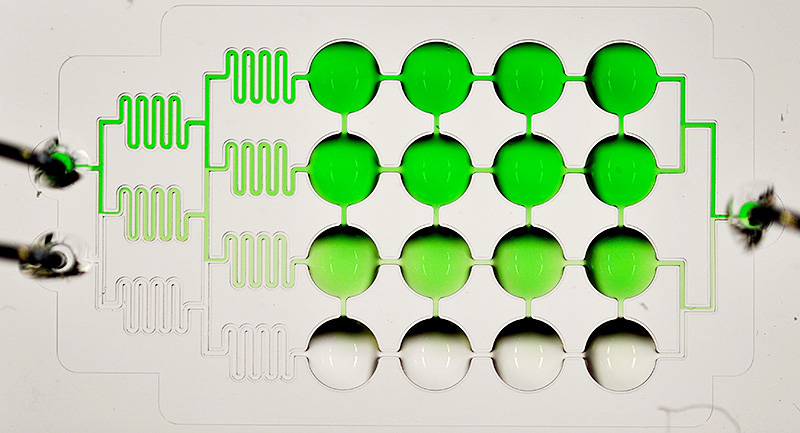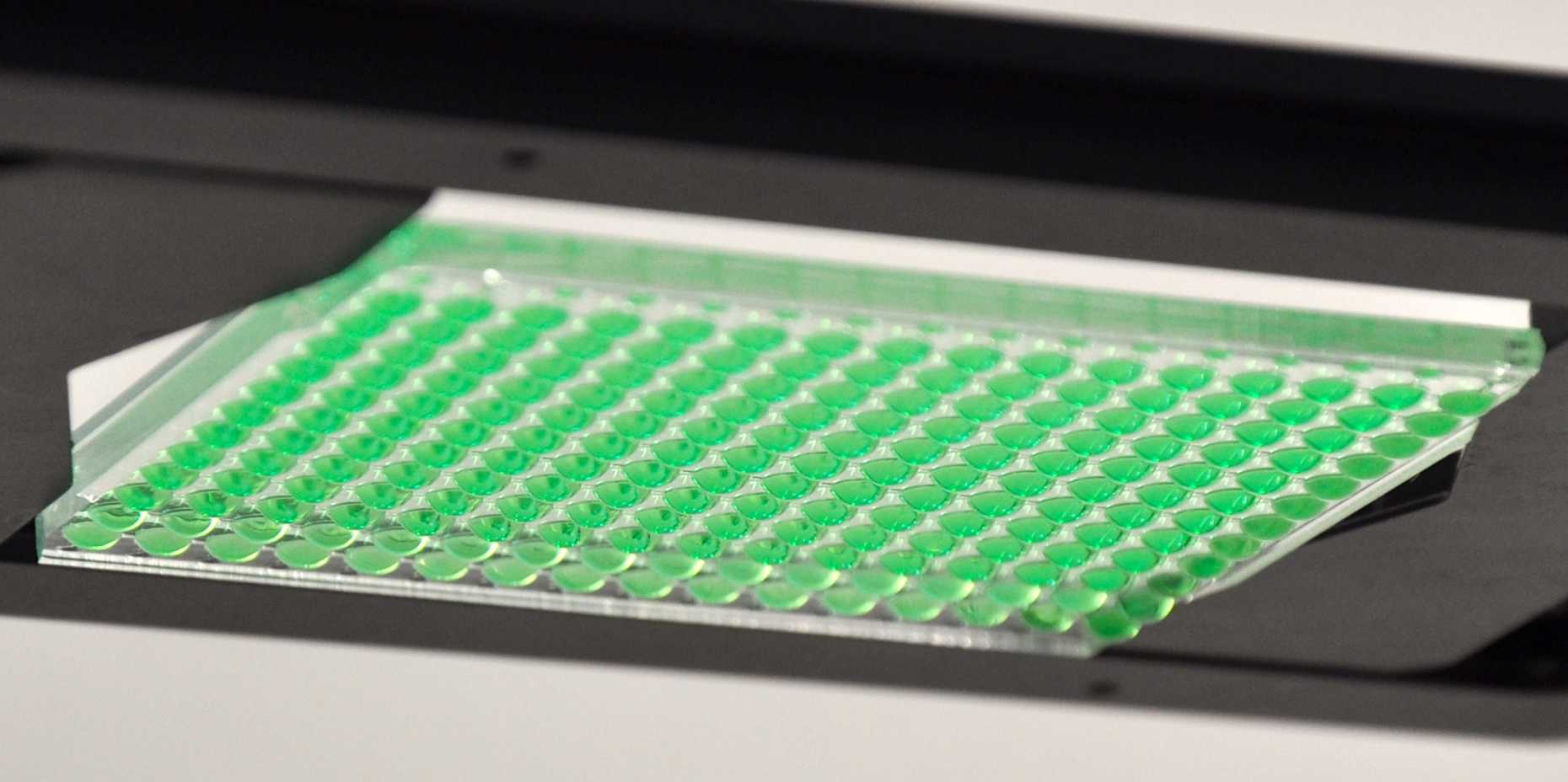Microtissues in hanging drops mimic organ system
Researchers are attempting to study the interactions between different cell types of the human body by using cultured cells. Technology recently developed at ETH Zurich now enables a network comprising spherical microtissues in hanging drops that is intended to simulate interactions in a human body and enables the testing of pharmacologically active substances under realistic conditions.
Scientists normally use cell cultures to test pharmacologically active substances or toxins. Until now, two-dimensional cell cultures on flat substrates have dominated, which has major drawbacks: in their morphology and metabolism (cells often adhere to the substrate in an unnatural form), cell layers on surfaces are different from those in a living organism, where three-dimensional structures prevail.
Therefore, researchers have now developed hanging-drop platforms: instead of cultivating cells on flat substrates, they cultivated them in hanging drops of nutrient solution in a regular arrangement, where the cells formed spherical microtissues, so-called spheroids of about half a millimetre diameter. The surface tension of the liquid holds the drops in a hanging position and envelops the spheroid. Inside each drop, the cells are in close contact with each other and can communicate. The morphology and behaviour are very close to that of real cell forms. Once heart cells have merged into a spheroid, for instance, they begin to beat rhythmically.
Drops interlinked
ETH-Zurich researcher Olivier Frey from the group headed by Andreas Hierlemann, a professor of biosystems engineering at the Department of Biosystems Science and Engineering (D-BSSE), has now developed a network of interconnected drops from a platform of isolated hanging drops by connecting them through minuscule channels in a grid-like configuration. Owing to these channels, the spheroids or microtissues in the individual drops are interconnected via fluid flows, enabling the microtissues to communicate with each other as they would in a living organism.

The drops are continuously supplied with nutrient solution, which is pumped into the channels. A rim structure around the edge of the channel prevents liquid from escaping and the platform from being flooded. The nutrient solution is supplied in a way that the drop size remains the same. If too much solution were to be pumped in, the drops would drip off. Frey designed the system without an airtight lid, which makes the new platform much easier to fabricate and operate. However, the cell cultures still need to be stored in an incubator at controlled temperature and high humidity levels.
Body-on-a-chip vision realised
The researchers can also feed active substances to be tested into the system in defined concentrations via supply lines. Thanks to the arrangement of these feed lines, channels, and drops, different substance concentrations can be produced from one microtissue series to the next so that a concentration gradient develops across the entire platform.
This “hanging” microfluidic system, which has just been presented in Nature Communications, enables the BSSE researchers to organise several spheroids of different cell types in the orders in which they are found in the body and expose them to different concentrations of a substance. The system enables the scientists to simulate a multi-organ system realistically on a single platform. “We realised a body-on-a-chip system relatively easily,” says a delighted Frey, who has been working on the test platform for two years.
Liver cells connected to cancer cells
The initial tests on liver and cancer cell spheroids were promising. In one series, Frey and his team inserted liver cells into the first three drops and cancer cells into the fourth. After the cells had organised themselves into spheroids, he fed a cytostatic agent, i.e., a substance that inhibits cell growth, into the test setup in different concentrations for each set of microtissues.
The agent only kills off cancer cells if liver cells activate it beforehand – an effect the researchers were able to recreate. At the same time, they could observe the concentration at which the toxin affects the cancer cells and the point, at which the liver also begins to suffer. As expected, if there were no liver cells in the microfluidic system, the drug did not affect the cancer cell growth at the respective concentration.
Patent pending for the system
Frey and his team have applied for a patent for their new test platform, which can be produced relatively easily and at low cost by using a replication method. The fabrication requires a negative master form, made of silicon, which is produced in a cleanroom. Multiple casts of it can then be made with a polymer. For large quantities, an injection moulding technique can also be used, where the pieces only cost a few cents. The Basel-based researchers developed the production of the microtissues for the platform in collaboration with InSphero, a D-BSSE spin-off.
Pharmaceutical companies that are looking to test new substances for efficacy and undesired side-effects may be particularly interested in the new system, as it enables to conduct such testing in a quick, flexible and straightforward way. “Our system is attractive for pharmaceutical companies, because it gives them a realistic idea of whether a new substance might be harmful already at an early stage in the drug development process,” stresses Frey. How and whether a new heart drug affects the liver, for instance, can be tested in an early phase.
The researchers are now looking to equip their hanging drop platform with sensors that can measure metabolic products in the drops and that should enable a continuous data read out. The sensors are intended to measure lactate or glucose, for instance. “The chip production might well be a little bit more costly through sensor integration, but this kind of platform will provide us with a lot more information,” says Andreas Hierlemann.
Literature reference
Frey O, Misun P, Fluri D, Hengstler J, Hierlemann A: Reconfigurable microfluidic hanging drop network for multi-tissue interaction and analysis. Nature Communications 5, Article number:4250. Online-Publikation vom 30. Juni 2014. DOI:external page10.1038/ncomms5250call_made

